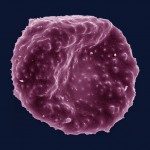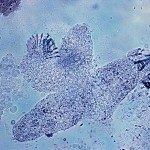Présentation
Antigenic variation is an immune evasion mechanism used by the malaria parasite Plasmodium falciparum to establish prolonged infection. It prevents parasite clearance by switching the display of variant surface antigens encoded by the 60-member var gene family. Blood stage parasites express var genes in a mutually exclusive manner, with a single var active at a given time, ensuring that the immune system remains naive to a parasite sub-population. Despite multiple factors known to be involved in default var gene silencing, such as histone modifications and nuclear architecture, a specific activation factor has not been identified yet. In this thesis work, a polymerase III-transcribed family of GC-rich ncRNA was explored as a candidate regulatory factor of var gene activation. The GC-rich ncRNA family consists of 15 homologous members positioned adjacent to chromosome-central var genes. RNA FISH analysis revealed that the GC-rich ncRNA is targeted to the var expression site in trans. Furthermore, overexpression of one GC-rich ncRNA member overrules singular var expression and induces transcription of a specific subset of var genes. We developed a dead Cas9 system aiming to target transcription of all GC-rich members. Strikingly, transcriptional blocking of all GC-rich members by CRISPR interference results in down-regulation of var transcription to background levels. Our data support a role of this ncRNA in the activation process of var genes. Moreover, we show that the GC-rich ncRNA gene family is clonally variant, indicating that this may determine switch rates and switch order of the var gene family. We developed a robust ChIRP (chromatin isolation by RNA purification) protocol that allowed us to identify potential chromatin binding regions and interacting partners of this ncRNA family. The validation of several promising candidate proteins obtained my mass spectrometry is currently ongoing. Additionally, we investigated whether GC-rich genes display long-range interactions using a chromosome conformation capture technique. We obtained evidence that the gene loci of these ncRNAs display long-range interactions between them and can thus play a role in nuclear spatial foci organization. This study provides the first functional link between Pol III and Pol II transcription in the process of mutually exclusive expression of virulence genes. Moreover, exploring this ncRNA is a key step in unveiling the process of immune evasion and pathogenesis of P. falciparum.




